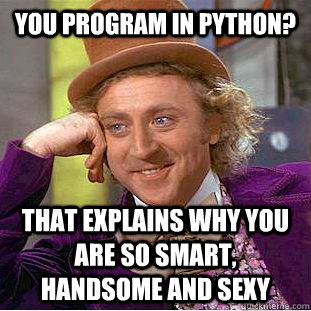Python Introduction Workshop
Workshop
https://summer.hackersanddesigners.nl/451.txt
Please keep in mind that Python cares about whitespace (spaces, returns, etc...), if you just paste the code in, be aware of what spaces you are also pasting in... ;-)
First alias python3 so you don't go nuts! Server by default uses python 2, but for this workshop we will use python 3.
$ alias python=python3
Create a file
$ nano myprog.py
Add the following line
print('Hello World!')
Save the file and exit. Ctrl+O, Ctrl+X
Run the program.
$ python3 myprog.py
Add a comment to the top of your program. Comments are to help people read your program.
# Program by [username]
Create a variable to store input into the program.
# Import adds a library (addition functionality) to your program
# sys is the system library
import sys
# Read from stdin into a variable called instr
instr = sys.stdin.readline()
# Print message w/ variable
print('Hello ' + instr)
Run the program, this time with input.
$ whoami | python myprog.py
Use the input to alter the output, before your print message add:
if instr == 'jbg': instr = 'Programmer' else: instr = 'Writer'
Save and run.
It doesn't work! This is because there is actually a return character in the string. Change the following:
instr = sys.stdin.readline().strip()
Save and run.
$ whoami | python myprog.py $ echo 'Ray Bradbury' | python myprog.py
Create a new program (myprog2.py) which loops through all the lines coming from stdin.
import sys for line in sys.stdin: print(line.strip())
Run it.
$ cat /pub/451.txt | python myprog2.py
That's a lot of lines, how many exactly?
$ cat /pub/451.txt | python myprog2.py | wc -l
Simplest loop.
while True:
print("hello.")
Simple loop.
for i in range(0, 10):
print("hello")
Let's store those lines in an array.
import sys
lines = []
for line in sys.stdin:
lines.append(line.strip())
print('Stored ' + str(len(lines)) + ' lines.')
Run it.
$ cat /pub/451.txt | python myprog2.py
451 remixed via a function. Add the following to the top of your program.
def remix(lines):
lines = reversed(lines)
for line in lines:
print(line[::-1]) # This is extended slice syntax. It works by doing [begin:end:step]
Add the following to the end of your program.
remix(lines)
Run it.
$ cat /pub/451.txt | python myprog2.py | more
Try other splits.
print(line[0:10]) print(line[10:15] + line[0:10])
Why is it called Python?
When he began implementing Python, Guido van Rossum was also reading the published scripts from “Monty Python’s Flying Circus”, a BBC comedy series from the 1970s. Van Rossum thought he needed a name that was short, unique, and slightly mysterious, so he decided to call the language Python.
